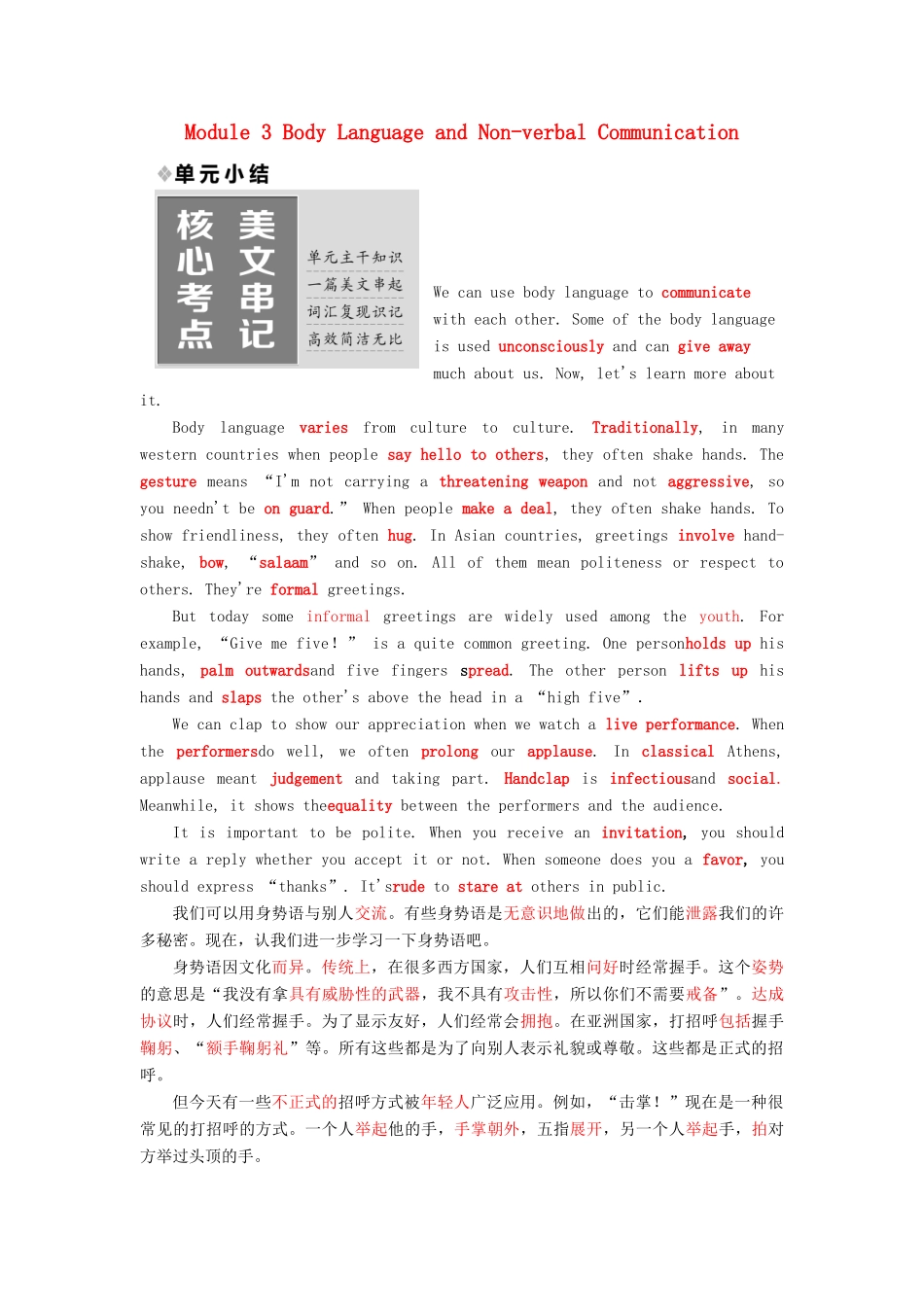Module 3 Body Language and Non-verbal CommunicationWe can use body language to communicate with each other. Some of the body language is used unconsciously and can give away much about us. Now, let's learn more about it.Body language varies from culture to culture. Traditionally, in many western countries when people say hello to others, they often shake hands. The gesture means “I'm not carrying a threatening weapon and not aggressive, so you needn't be on guard.” When people make a deal, they often shake hands. To show friendliness, they often hug. In Asian countries, greetings involve hand-shake, bow, “salaam” and so on. All of them mean politeness or respect to others. They're formal greetings.But today some informal greetings are widely used among the youth. For example, “Give me five!” is a quite common greeting. One personholds up his hands, palm outwardsand five fingers spread. The other person lifts up his hands and slaps the other's above the head in a “high five”.We can clap to show our appreciation when we watch a live performance. When the performersdo well, we often prolong our applause. In classical Athens, applause meant judgement and taking part. Handclap is infectiousand social. Meanwhile, it shows theequality between the performers and the audience.It is important to be polite. When you receive an invitation, you should write a reply whether you accept it or not. When someone does you a favor, you should express “thanks”. It'srude to stare at others in public. 我们可以用身势语与别人交流。有些身势语是无意识地做出的,它们能泄露我们的许多秘密。现在,认我们进一步学习一下身势语吧。身势语因文化而异。传统上,在很多西方国家,人们互相问好时经常握手。这个姿势的意思是“我没有拿具有威胁性的武器,我不具有攻击性,所以你们不需要戒备”。达成协议时,人们经常握手。为了显示友好,人们经常会拥抱。在亚洲国家,打招呼包括握手鞠躬、“额手鞠躬礼”等。所有这些都是为了向别人表示礼貌或尊敬。这些都是正式的招呼。但今天有一些不正式的招呼方式被年轻人广泛应用。例如,“击掌!”现在是一种很常见的打招呼的方式。一个人举起他的手,手掌朝外,五指展开,另一个人举起手,拍对方举过头顶的手。看现场演出时,我们拍手表示欣赏。当表演者表现得很好时,我们常常会延长掌声。在古雅典,掌声意味着评判和参与。拍手是有传染性的,而且也是有社交性的。同时,它显示了表演者和观众之间的平等。礼貌很重要。当你接到邀请时,不管接受与否,你都应该回复。当有人帮了你的忙时,你应该表达谢意。在公共场合盯着别人看是无礼的。

